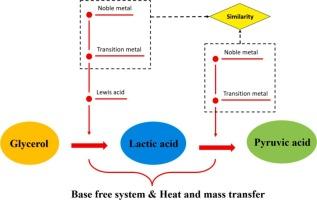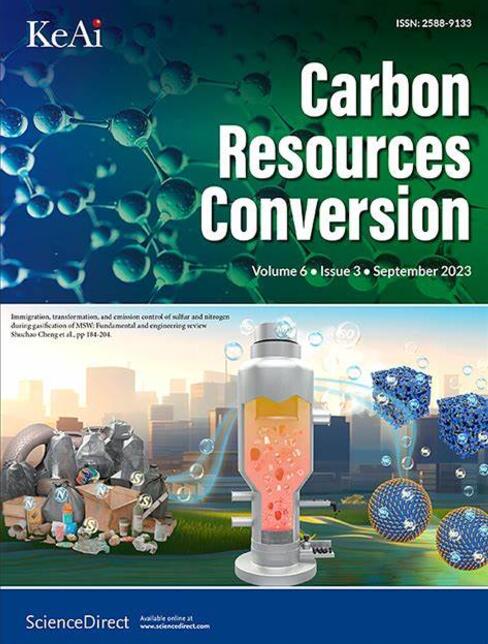Recent progress in glycerol oxidation to lactic acid and pyruvic acid with heterogeneous metal catalysts
IF 7.5
3区 环境科学与生态学
Q2 ENERGY & FUELS
引用次数: 0
Abstract
The production of biodiesel generates a significant amount of glycerol by-products. One way to utilize glycerol is converting it into lactic acid, which can then be further transformed into pyruvic acid. In this review, we examine existing reaction pathways and propose a new approach for the indirect synthesis of pyruvic acid using glycerol and lactic acid as intermediates. Noble metals and transition metals are suitable for the oxidation of glycerol and lactic acid, and the combination of different metal sites may exhibit synergy effect and promote the process. It should be noted that the dehydration and isomerization of 1,3-dehydroxyacetone to lactic acid can be catalyzed by Lewis acids, which can be utilized in the base-free system that simplifies the postprocess procedure. Excepting noble metals, synergistic effect between iron and molybdenum also shows promising performance in catalyzed oxidation of lactic acid. Furthermore, many research results also suggest that mass transfer plays a critical role in this cascade reaction, which shed light on the catalysts modification for the similar reactions.

利用异质金属催化剂将甘油氧化成乳酸和丙酮酸的最新进展
生物柴油的生产会产生大量的甘油副产品。利用甘油的一种方法是将其转化为乳酸,乳酸再进一步转化为丙酮酸。在这篇综述中,我们研究了现有的反应途径,并提出了一种以甘油和乳酸为中间体间接合成丙酮酸的新方法。贵金属和过渡金属适合于甘油和乳酸的氧化,不同金属位的组合可能表现出协同效应,促进该过程。值得注意的是,1,3-去羟基丙酮的脱水和异构化可以由路易斯酸催化,可以在无碱体系中使用,简化后处理程序。除贵金属外,铁和钼的协同作用在乳酸的催化氧化中也表现出良好的效果。此外,许多研究结果还表明,传质在该级联反应中起着关键作用,这为类似反应的催化剂改性提供了思路。
本文章由计算机程序翻译,如有差异,请以英文原文为准。
求助全文
约1分钟内获得全文
求助全文
来源期刊

Carbon Resources Conversion
Materials Science-Materials Science (miscellaneous)
CiteScore
9.90
自引率
11.70%
发文量
36
审稿时长
10 weeks
期刊介绍:
Carbon Resources Conversion (CRC) publishes fundamental studies and industrial developments regarding relevant technologies aiming for the clean, efficient, value-added, and low-carbon utilization of carbon-containing resources as fuel for energy and as feedstock for materials or chemicals from, for example, fossil fuels, biomass, syngas, CO2, hydrocarbons, and organic wastes via physical, thermal, chemical, biological, and other technical methods. CRC also publishes scientific and engineering studies on resource characterization and pretreatment, carbon material innovation and production, clean technologies related to carbon resource conversion and utilization, and various process-supporting technologies, including on-line or off-line measurement and monitoring, modeling, simulations focused on safe and efficient process operation and control, and process and equipment optimization.
 求助内容:
求助内容: 应助结果提醒方式:
应助结果提醒方式:


